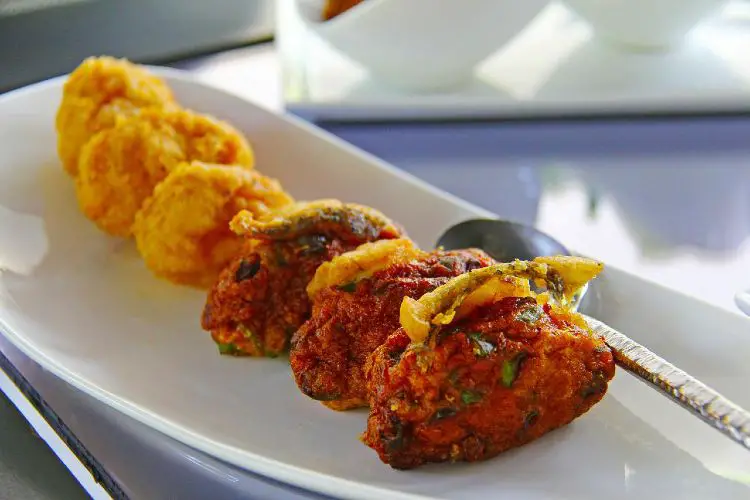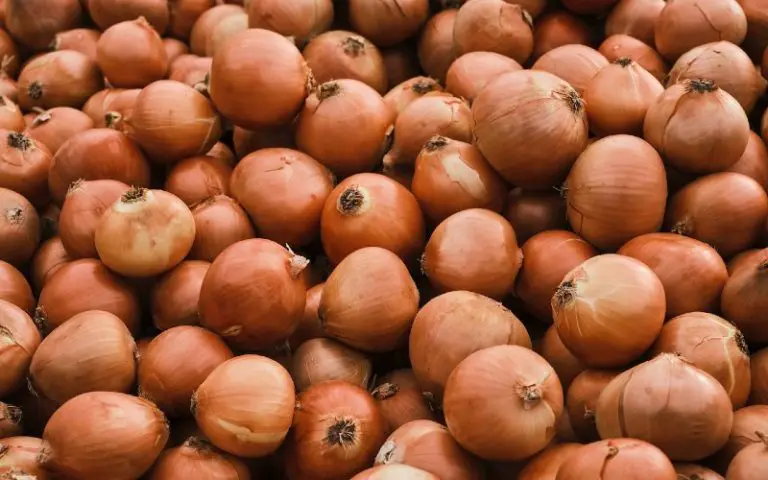The Foodie Ambitions of The National Trust
Britain’s biggest landowner, the National Trust, is also its biggest private charity catering business. Every year the NT feeds 10 million people at over 150 of their 350 properties, employing 1000 people who cook 85% of everything sold across its restaurants, cafes, tea rooms and kiosks. The NT owns 618 000 acres of land, 709 miles of coastline and has 1500 tenant farmers, so it is also one of the nation’s most important producers of food.
As one of the NT’s 4 million members I have seen many changes in the way food is sold, presented, cooked and served in properties as far afield as Killerton House near Exeter, Charlecote Park in Warwickshire, Cotehele in Cornwall, Felbrigg Hall in Norfolk, Ham House in Surrey and Llanerchaeron in Wales, to name but a tiny few, over the last 25 years.
In the past, my husband, daughter and I have experienced everything from insipid, tepid stews, to unseasoned, gristly soups, overcooked, tough meat, badly cooked fish and hard, stale bread. The Trust’s role was seen by many of its aged trustees to be the preserver and conserver of heritage and buildings, membership fees providing £120 million for important conservation work not for appetising lunches. The organisation was most definitely not a proponent of culinary excellence, and expenditure on food and cookery was way down the list of priorities. Many times we planned our day’s visit round local gastropubs and Good Food Guide recommended restaurants, because eating at an NT property was often a lottery. Driving away from the big house hungry or disappointed, leaving long, oak lined driveways, flanked by herds of deer or topiary hedges, we often thought what a great shame that the same meticulous attention to detail within the main building and gardens was not replicated in the restaurant.
In fact, one of the very few good places to eat was, and still is, The Courts Garden in Holt, near Bradford Upon Avon. The restaurant there is not run by the National Trust but by a concessionary partnership and the food is excellent. Nearby is the Old Glove Factory complex where you can buy some of the very finest artisanal craft works sourced by the NT. We have often wondered why this level of excellence could not be achieved at more NT properties.
Yet in the last five years we have witnessed a notable change: the NT has started to take food very seriously indeed, its standards have improved dramatically in both provenance and preparation of ingredients and investment has risen greatly in providing new, modern eating areas and better facilities. The NT is now a growing player in the UK’s food scene and it is playing catch-up.
I went to meet Trish Topliss, Head of Food and Beverage at the Trust’s Headquarters in the Heelis Building in Swindon (which boasts a good restaurant and spacious staff canteen, I may well add), to find out what the future holds for the NT’s stable of eateries and how this large and disparate organisation manages to lure, keep and satisfy the appetite of its relatively captive customer base.
Firstly, Trish emphasized how challenging it is logistically and architecturally for the NT to provide different types of food and beverages for a very wide range of visitors in an extremely diversified range of buildings.
“On average our visitors drive from anywhere between 40 minutes to 2 hours to go and see a property, and we have to consider very carefully what refreshments they will need once they have arrived and how these should be served. Visitor units may vary from young families with small children who may be noisy and lively and want fast food served in a relaxed environment half-way through their visit to elderly couples with no children who want a calmer, slower, fine-dining environment at the end of their house and garden tour. We are constantly juggling with the segmentation and consistency of our offers, trying to ensure we provide the type of food in the right manner to capture the spirit of the unique places we have on offer.”
And unique is the apt word to describe the special portfolio of attractions that the NT nurtures for the nation. The National Trust Handbook describes the houses, gardens and estates under its stewardship and our visceral relationship to this collective patrimony:
“We all need beauty. We all need fresh air, open doors, hidden depths, new views. We need places that can lift our spirits and help us to find a different rhythm in our lives. This kind of refreshment is not a luxury; it’s vital. Extraordinary places can give us all this. The National Trust stands up for these places. We give them a life into the future and we invite everyone to enjoy them. We help people belong to places and places belong to people.”
And it is this connection that is now at the very heart of the NT’s food strategy, as the Trust is one of the biggest buyers of their farm tenants’ produce, and are therefore committed to sourcing as much of their ingredients locally and from their own land. Five important initiatives are particularly noteworthy.
Firstly, the Fine Farm Produce Awards showcase the work of the very best tenant farmers, and place their produce in NT shops or on Menus. The producers of Hardwick Ham in Cumbria, Dolaucothi Lamb in Carmarthenshire, Red Devon beef in Somerset and Scotney Pale Ale from Kent are just a few of the winners of this nationally renowned platform.
Secondly, the Food Glorious Food initiative has also helped to raise awareness of sustainable, seasonal, specialized food production within the NT’s portfolio, in a didactic and celebratory way, to engage visitors right across the demographic.
Thirdly, the My Farm initiative has created 10 000 new online farmers, who, through social media and the Blog are able to “work” interactively with farm manager Richard Morris on the NT’s Wimpole Estate in Cambridgeshire, deciding which crops to grow, which animals to rear and what stock investments to make.
The fourth initiative is the creation of 1000 new allotments on NT land, registered on the Landshare website, providing affordable growing space in 40 different locations.
Lastly, Community Supporting Agriculture (CSA) initiatives will mean that supporters can invest in shares, costing as little as £20 each, to provide working capital and financial security to farms across the NT’s estates, pre-buying trading surpluses.
Making sure that all these noble and ambitious initiatives then translate into good food on the plate and in the shops is the not inconsiderable mandate of the Food and Beverage team back at HQ.
The team at Heelis consists of Trish and just three other people and between them have expertise in food, capital investment, brand management and environmental standards. Trish’s background is one of hotel, pub and restaurant management, having worked for both Whitbread and Yo Sushi. She has witnessed the British food renaissance over the last ten years and agrees that the NT has ridden its wave:
“The growing interest in regional British cookery is one that is very important for our visitor mix. This is why, wherever possible, if there is a kitchen garden at a specific property, we will try to make sure the salad menu includes what is grown from there, or if there is lamb on the estate, then the chefs will use that in a stew. The challenge for us is to grow this concept into a bigger proposition in the decades ahead, by creating partnerships so that we can sell the produce from NT farms. We can maximize seasonal gluts in preserves, for example. Our brand name is one that is consistent and trusted by many shoppers. With the quality of our ingredients, the skill of our staff and the great story of provenance and sense of place, we are on a mission to raise our game in catering so that our visitors are not just satisfied, but impressed.”
Recruiting and retaining catering staff is just as challenging for the NT as any other large organisation. It is not easy for the NT to compete with top gastropubs, hotels and restaurants in the hunt for good, hard working chefs. Upon leaving catering college, it is unlikely that the NT is the first port of call for most young, enterprising would-be Michelin starred chefs. Trish outlined the benefits, however:
“People come to work for the NT for a variety of reasons, and it is easy to see why someone would want to work in a beautiful, unique historic palace, castle, manor or garden. Yet in the kitchens the work is very much the same as in any other commercial kitchen. What we can offer, however, and what differentiates us, are loyalty to the local community, very good working hours, shifts that do not entail evening work and long-term diary schedules that take into account the school holidays, so that working parents know well in advance which days they have to work during the school term. We know our busy periods, they are the same every year.”
Trish and her team analyse very carefully the food and drink trends that come and go in the hospitality market. They are a bigger tea and coffee seller than Costa Coffee, and who would have predicted the exponential growth in this sector ten years ago. In their quest to make eating with the NT a memorable and enjoyable experience they watch to see what other branded traders offer across different market segments so as to keep up with consumer demands, styles and aspirations. Pret a Manger, Daylesford, Ottolenghi, Waitrose and Peyton and Byrne are all names that operate in a very similar market to the NT, although the way in which corporations of that nature can behave is very different from how a giant, multi-site, charitable entity like the NT is able to work. As Dame Fiona Reynolds commented, when she took on the mantle of Director General for the NT in 2001, there is no such thing as a homogenous “one size fits all” strategy for the activities of this heritage behemoth.
Yet looking and learning is something the Trust is skilled at, and if you are able to find local honey, ciders, juices, beers, flours and jams for sale at more and more NT shops, alongside the lavender soaps, Welsh blankets and bird spotter books, as well as more freshly baked breads, cakes and biscuits at NT restaurants and cafes, then it is because the NT has realised that visitors want to spend their money on their exclusive brand. If you give your Auntie a jar of NT chutney for Christmas, you know it’s going to be delicious. The brand is stylish, recherche and upper class, you place your trust in its hands assuredly.
On the one hand, any marketing and branding company looking at the NT from the outside world would be able to see the profit opportunity of this retailer-caterer-tourist attraction-employer-landowner-grower as enormous. But on the other hand, any member who has ever attended an NT Annual General meeting will testify, speed, entrepreneurship and opportunism are not characteristics normally attributed to this Goliath. Things change gradually, imperceptibly even.
Foodies watch with interest how the future unfolds. One thing is certain for sure: if the NT’s ambition to have 5 million members by 2020 is to be achieved, food will most definitely be a very important part of the agenda. When the press reported in October 2011 that membership had reached an all-time high, Dame Fiona Reynolds commented: “We were set up 116 years ago to look after special places so that they could be enjoyed by all. Clearly that founding aim remains as relevant today as it was then…. There is a growing hunger for what the Trust has to offer.” She is not wrong. In this uncertain and changeable world we constantly look for security, peace and continuity. I predict the rise and rise of consumer appetite for brand “NT”: it is wholesome, authentic, artisanal and Made in Britain. This could, potentially, be one of the most interesting food stories to watch in the next few years.
Contact Details
National Trust Website: www.nationaltrust.org.uk
Follow the team on Twitter: @nationaltrust
Fine Farm Produce Awards: www.nationaltrust.org.uk/main/w-chl/w-countryside_environment/w-food_farming/w-food_farming-fine_farm_produce-award-2011
Food Glorious Food: www.foodgloriousfood.org.uk
My Farm: www.my-farm.org.uk
National Trust allotments: www.nationaltrust.org.uk/main/w-global/w-news/w-latest_news/w-news-growing_spaces.htm
Community Supporting Agriculture: www.nationaltrust.org.uk/main/w-chl/w-countryside_environment/w-food_farming/w-food-community-supported-agriculture.htm
The Courts Garden in Holt: http://www.nationaltrust.org.uk/main/w-thecourtsgarden





